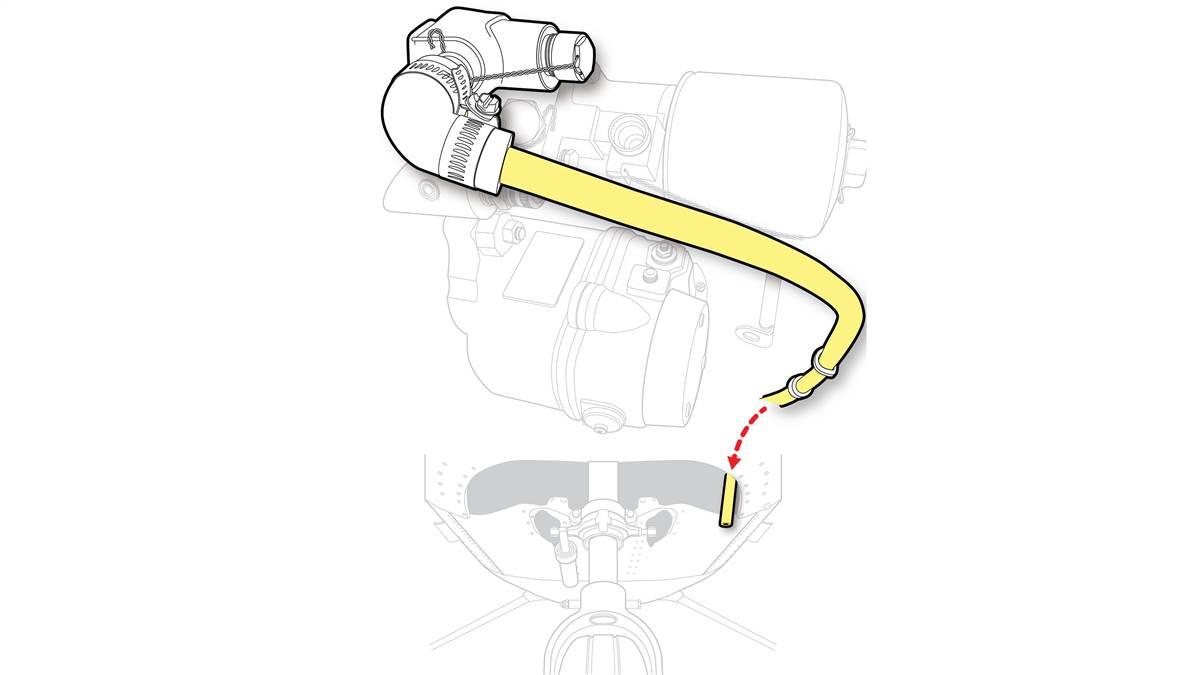
Look low. Really low. That small metal or plastic tube extending out of the cowling is the engine’s breather tube.
Engines and moisture don’t mix, so getting rid of the harmful water vapor and any liquid water is important for keeping the engine safe and reliable. That’s done through the oil breather tube, a section of plastic or metal tubing that comes out of the engine and vents through to the outside.
Although this benign little hose doesn’t require much maintenance, it does have one major drawback—a blocked breather tube can pressurize the engine and cause seals to fail. Those seals hold in oil, and without them, the engine will throw the black stuff everywhere, which may be quickly followed by it shutting down altogether.
If a breather tube is blocked, ice is usually the culprit. On cold days, bend down and check the tube to ensure it’s completely clear of ice. If there’s ice present, make sure to get rid of it before starting up.
Many breather tubes have a smart and simple way to counteract a blockage. Called a “whistle slot,” the manufacturer will cut a small slice in the tube. When the tube becomes pressurized, the slice allows air to escape.



